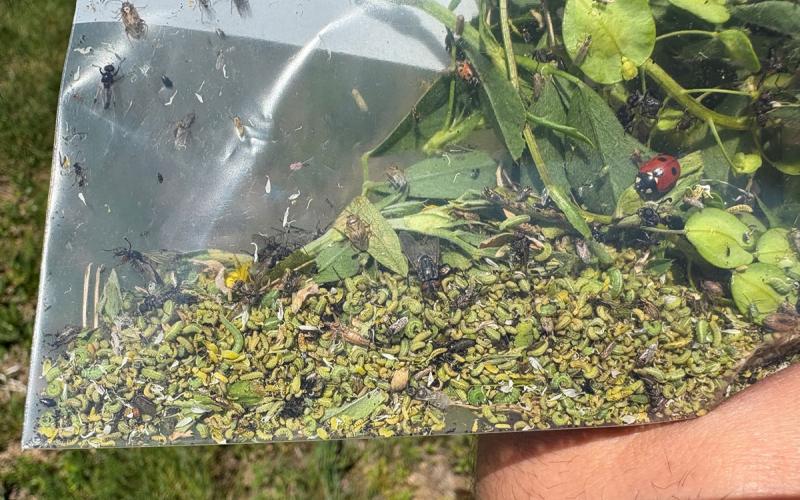Written with collaboratively by Adele Harty, former SDSU Extension Cow/Calf Field Specialist; and Ken Olson, former Professor & SDSU Extension Beef Specialist.
Nitrate poisoning is something we think about with forages such as millet, oats, corn, sorghum, sudan, kochia and others that have been fertilized or if there is a drought, but water can also be a contributing factor. Nitrate (NO3) is not especially toxic, however in ruminants and herbivores, the bacteria in the digestive tract convert nitrate (NO3) to nitrite (NO2), which is readily absorbed and 10 times more toxic than nitrate.
Nitrate poisoning can be a concern due to runoff making its way into stock dams from nitrogen-fertilized fields. Nitrate is soluble and will be picked up and flow with runoff into a pond or into the recharge area for a spring or well, and can be of great concern if the field was fertilized with nitrogen. Typically we will see more of a problem with nitrates in wet years that have more runoff, but it is important to be aware of the potential issue in any year. Nitrate toxicity in water will be the same as for high nitrate forages. Again, we often think of high-nitrate forages as a drought concern, but in the case of water, it is more of a concern in wet years.
When determining nitrate levels in the diet, it is important to consider the level in the water as well as in any forage. Nitrate levels are commonly provided in lab reports in one of two ways, either as NO3-N or NO3. Determine which way it is reported in a given lab report and compare to the following levels:
Levels of nitrate-N (NO3-N) in water and the risk levels:
- 0-100 ppm-Safe
- 100-300 ppm-Use caution, and consider the additive effect with feed
- >300 ppm-Potentially toxic
Levels of nitrate (NO3) in water and the risk levels:
- 0-440 ppm-Safe
- 440-1300 ppm-Use caution, and consider the additive effect with feed
- >1300 ppm-Potentially toxic
Levels of nitrate-N (NO3-N) in forage and the risk levels:
- 0-0.15%-Safe
- 0.15-0.45%-Use caution, may need to dilute or limit feed forages.
- >0.45%-Potentially toxic
Levels of nitrate (NO3) in forage and the risk levels:
- 0-0.65%-Safe
- 0.65-2%-Use caution, may need to dilute or limit feed forages
- >2%-Potentially toxic
SDSU Extension Regional Centers have electroconductivity (EC) meters, which measure total salt content in water. This provides a reasonable estimate of whether water quality is a concern. If the EC meter suggests problems, a water sample can be sent to a laboratory to accurately measure actual nitrate levels. Knowledge of these levels gives the rancher the ability to manage potential problems. For more information contact your local Cow/Calf Field Specialist.


